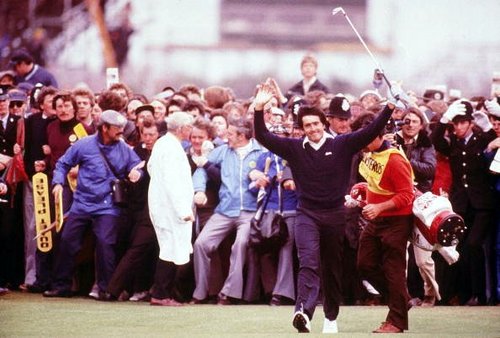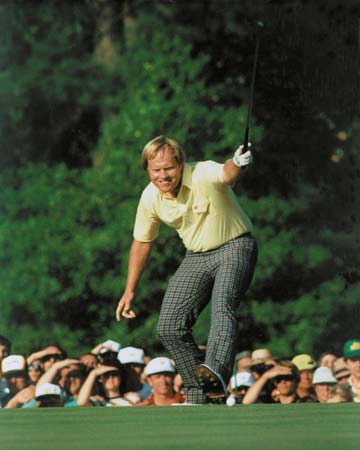Feeling bad about weather and not being able to play golf? Here are a few tricks from Vine user PJCarmichael which you can try at your home.
There are a log more tricks on his page – check them out!

The Scratch Pad – MyScorecard Blog
Your Online Golf Handicap Blog
Feeling bad about weather and not being able to play golf? Here are a few tricks from Vine user PJCarmichael which you can try at your home.
There are a log more tricks on his page – check them out!
We at the Scratch Pad are big fans of the Priceonomics blog – a great source for well-written articles about data, economics, and business. They recently tackled the notion of golf courses per capita, and we were excited to share their post.
When this author moved to San Francisco, he was surprised to stumble on multiple golf courses. First a jog revealed the Golden Gate Park Golf Course. Bike rides along the Pacific coast led to the discovery of several more. Internet searches produced a final tally: nine courses in the city plus one more outside city limits that is under the city’s jurisdiction.
San Francisco’s golf courses are not located in the middle of downtown, but their existence remains jarring. The gold rush created San Francisco, but now the land itself is a treasure. The city is home to the country’s most expensive real estate market. Developers have started building “micro-apartments” to meet the insatiable demand for housing; in contrast, golf is a greedy hoarder of land. Eighteen hole golf courses occupy 100-200 acres and host a daily maximum of 200 to 400 golfers. At San Francisco’s current level of population density — which is low compared to cities like Manila and Mumbai but the highest of any major American city after New York — one hundred acres could provide housing for over 2,600 people.
Count is not perfect as some clubs may have multiple courses, and some courses are only 9 or 12 holes. As cities vary by size and density, this count is not the final word on an urban golf index. Help check our count by looking at the source data here.
Yet San Francisco is not exceptional. As the above chart shows, all of America’s large, densely populated cities have a significant number of golf courses. And if one includes courses just outside city limits in areas that are home to significant numbers of people who work and socialize in those cities, the number rises significantly. At a time when America’s wealthiest and most dynamic cities are so starved for space that low income residents are being pushed out, why are these cities home to so many golf courses?
Don’t Blame the Monopoly Man
This author’s look at how golf courses became prevalent in San Francisco, where Priceonomics is located, revealed a few answers — none of them shady deals that gave land to golf course developers instead of subsidized housing.
One simple reason for the prevalence of golf courses in such a dense city is simple inertia. Only two San Francisco golf courses were built after World War II; the rest were all originally constructed in the 19th or early 20th century in parts of San Francisco still being developed out of sand dunes. In 1895, for example, civilians received permission from the military to build the Presidio Golf Course on what was then an isolated military base. When two private clubs bought land for golf courses around Lake Merced in the 1920s, San Francisco’s population was 500,000 (compared to 825,000 today) and the lake mostly farmland and coastal military installations.
But the key to understanding San Francisco’s abundance of golf courses is noting that of its nine golf courses and clubs, the majority are public. The Recreation and Parks Department manages five courses (plus one more in nearby Pacifica), and while the Presidio Golf Club is private, it is located on public land and is open to the public.
So, San Francisco is not full of golf courses because made men shell out to play golf on America’s most valuable real estate. (After all, wealthy San Franciscans have nice cars they can drive to other courses.) Rather, San Francisco is full of golf courses because the city decided to devote green space to golf. As a result, playing 18 holes a few miles from downtown is relatively affordable; prices at the city’s public courses range from $22 to $66 for a resident. Writing about a group playing 18 holes at one public golf course, an SF Weekly journalist describes them as “a semiretired bookkeeper who plays in a blues band… a retired Oakland International Airport manager, and a construction foreman.”
A public affairs official at the Parks Department did not return our request for comment at the time of publication, but we can deduce a few reasons why San Francisco manages so many golf courses.
One is that golfers are a large and particularly vocal group. Before Parks and Rec makes any changes to a park, it seeks public comment. A 2008 report on San Francisco’s public golf courses estimated the number of city resident golfers at 81,050 (pdf), and those golfers seem to follow a national trend in which golfers have higher-than-average incomes and therefore more often mobilize to protect their interests. When the city hosted debate over changes to its golf courses in 2008, a blog post urged soccer players to attend meetings and demand more fields noting, “Only two people from our large and growing soccer community have attended the past meetings, while 80+ golfers made their voices heard.” This is especially true when wealthy families live across from a golf course and don’t take kindly to the idea of a neighboring course turning into a soccer field or events center.
Although we did not track down evidence of this as a motivating factor in San Francisco, one factor that has historically led towns and cities to build public golf courses is to generate revenue. In Landscape Architecture Magazine, Peter Harnik and Ryan Donahue write that golfing advocates could argue that golf courses were “a worthwhile public investment that subsidized a system’s other parks through green fees.” People can’t picnic or jog through public golf courses like they would other urban, green spaces; building golf courses in city parks essentially allows cash-constrained cities to cheat by building cash generating businesses and classifying it as public green space. Or, more generously, courses support the system by generating revenue for parks that everyone can use.
The $3 Million Golf Subsidy
The only problem is that for years, especially in San Francisco, public golf courses have drained the city’s coffers rather than replenished them. The aforementioned study, conducted by a consulting company hired by the city in response to criticism, noted that the city subsidized golf by $1.5 million a year. That was in 2008, and without policy changes, the report estimated that subsidy to increase to $3 million. It’s unclear whether that $3 million understates the subsidy by failing to include multimillion dollar course renovations.
San Francisco’s courses face the same problems that have hit golf courses across the country. In step with the real estate boom, America saw a surge of interest in golf and the building of many new courses. Between the recession and a bubble created by too much enthusiasm in the financial prospects of golf clubs, however, many courses aren’t getting that many golfers. As of 2008, only one of the courses managed by SF Park and Rec operated over 50% capacity. Public courses across the country are similarly under capacity and losingmoney.
The consultants’ report concluded that San Francisco’s public golf courses are poorly managed (they operate under several management models, but most are publicly run), and that they could earn the city money if leased to private management under 10-15 year contracts. Some local press responded that similar outsourcing arrangements failed to significantly increase profits when tried elsewhere; others dislike that private management would fire the current public employees and hire seasonal workers at lower wages. Most problematic is the fact that the report imagines private management investing millions to improve the courses so that they can compete with private ones. Large renovations would be funded with higher rates, which would make the courses expensive to use and a truly inaccessible part of the park system.
Should We Care?
San Francisco’s golf courses occupy over 700 acres of land, which equates to more than 2% of the real estate in a city with a high-profile anti-eviction and anti-gentrification movement where the building of any new building is bitterly contested.
But the city’s public golf courses could not be swapped out for condos or subsidized housing. Despite the seeming incongruence, San Francisco’s golf courses, which are mostly public and located in city parks, seem more relevant to battles over the use of green space than gentrification battles. The courses’ opponents are joggers, community gardeners, and soccer parents who want to transform public golf courses into jogging paths, vegetable patches, and playing fields.
To the extent that the surprising prevalence of golf courses in San Francisco has relevance to the city’s debates over gentrification, it’s likely as a reminder that the city’s small, constrained size — a commonly cited culprit for high rent prices — is not to blame. If San Francisco had the same population density as Manhattan, it could be home to around 3 million residents instead of its current 800,000. But in order to protect San Francisco from change, its residents have consistently voted for zoning laws that prevent developers from building taller commercial and residential buildings — even downtown. Similarly, a great public transport system could allow people to enjoy San Francisco’s employment opportunities and cultural capital while living outside the city limits, but the Bay Area Transport system has not “had a significant upgrade in San Francisco since 1976.”
All the rage over San Francisco’s rent prices and gentrification has failed to notice that 2% of its real estate is taken up by golf courses. That could be an oversight, but more likely it’s a fact that calls attention to what really matters in making the city more affordable.
Ever wondered what lightning could do to a golf course?
Here is a visual (or click here) of the aftermath of a lightning striking the flag-stick of the 1st hole in Quteniqua Golf Course, South Africa. Luckily, the strike occurred at night and nobody was injured.
Looks like god scored his hole-in-one there!
Last night’s lightening struck the flag stick on the 1st of Outeniqua. Not an everyday sight around here. pic.twitter.com/NflDPEd2dN
— Fancourt Golf (@FancourtGolf) May 20, 2014
A round of golf can often be uneventful. But when you play at any of the below listed courses, you raise the odds of an adrenalin-pumping round.
5. Carbrook Golf Club, Brisbane, Australia
Members of Carbrook Golf Club in Brisbane, Australia, now have even more reason to be cautious about the water hazard on the 14th hole. Believed to be the only Shark-Infested golf course in the world, it has now become a common sight for golfers playing the hole to view these man-eating Sharks swimming near the edges of the lake, just off the fairway.
The killers, some up to 10 feet long, are thought to have washed into the lake during a flood in the early 90s when the nearby Logan river burst its bank. Not all reactions have been negative – As club GM Scott Wagstaff said, “You can’t believe how close you are…just six feet away, “There’s no drama, it’s become a positive thing for the golf course. They are amazing. I’ve become a shark-lover since working here.” The club presently hosts a monthly tournament called the Shark Lake Challenge.
4. Uummannaq Golf Course
Uummannaq (click here for pronunciation), the coldest course in the world, is located 600 km north of the Arctic Circle and since 1997 has been the home to the World Ice Golf Championship. The picturesque par-36 9-hole course (with your typical mix of five par 4s, two par 3s and two par 5s), is located between two glacial icebergs – the moving ice results in a constantly changing layout as weather conditions fluctuate.
With the backdrop of huge mountains of ice glistening in the sun and course temperatures that fall below 50 degrees below zero, some local of the rules have added that suit the course conditions – notably the use of a fluorescent orange ball (as white balls are easily lost against the snowy backdrop), and ban of graphite clubs that have a tendency to shatter at these cold temperature.
3. Skukuza Golf Course, Kruger Park, South Africa
Skukuza Golf Course (pronounced Ska-koo-za) is a 9-hole course on the outskirts of Skukuza Restcamp. Built originally in 1972, it is now open to the public. There are no fences around the course, allowing the animals from the Kruger Park to wander in and out. Golfers are welcomed to the Course by a Sign board that states “Beware: Dangerous Animals. Enter at Your Own Risk”, which helps explain why an indemnity form has to be signed before teeing off at the first hole.
2. Harbour Town Golf Links, Hilton Head Island, South Carolina, USA
Harbour Town Golf Links is rated as one of America’s 100 greatest courses you can play but it became one of the most dangerous during the Heritage Tournament in 2001. Kip Henley was caddying for Brian Gay when Gay’s ball became stuck in the mud on the fifteenth green. Kip went to get the ball back and discovered it was guarded by a 6-feet alligator. While he may have been able to ask for a free lift, Kip calmly hit the creature with a rake until it left.
1. Camp Bonifas, South Korea
The golf course in Panmunjom, which lies in a demilitarized zone between North and South Korea is often called the most dangerous golf course in the world. It has earned this monicker not for deep hazards nor for unplayable rough, but because of the mine fields located on three sides of the course.
The golf course was constructed in 1972 for the service members of Camp Bonifas, the U.S military installation in Panmunjom and is not open to outsiders. It is a lonely outpost (no theaters or restaurants) and the course provides a much needed respite for the 50 U.S soldiers stationed there.
The course is made up of a single (and deadly) par 3 measuring 192 yards – but it plays more like a 250 due to the vicious winds. There are not many places where you have a lost ball due to explosion, making Panmunjom the “Most dangerous golf course in the World”
Watch this amazing video (click here) of 9 player putting 9 balls in one cup. It is not just a matter of accuracy but also the speed of each ball, great job by the team.
It’s true that anything small in sports can be branded. In Golf, tee markers are no exceptions. But this form of advertising is cute and not annoying – go through the below list of some interesting tee markers we came across.





Ballyliffin club, founded in the year 1947 is Ireland’s most ‘northerly’ golf club. Located in the extreme north-east of the Republic of Ireland close to the Inishowen Peninsula, Ballyliffin comprises of 365 acres of spectacular dune land which is surrounded by hills and mountains with the only borderline being the Atlantic Ocean.
Two outstanding and distinct 18 holes link – the classic Old Links and the wonderful new Glashedy Links, a world-class club house, and an unprecedented panoramic view of mountains and coastline make up Ballyliffin Golf Club a stunning and an amazing destination to sport. The Old acreage is designed by Mother Nature herself with little succor from Eddie Hackett and English architects – Lawrie and Pennick, who offered a final touch to the course.
The Old Links undulate in a natural setting that provides a sense of tranquility, presenting an immensely enjoyable challenge to every golfer. Running across 6,937 yards from the championship tee and a par of 71 with sweeping ocean views, the old links offer many fantastic holes with challenging fairways riding dangers at every turn. Upon his first visit to Ballyliffin in the 1990s, Faldo reportedly fell so in love with the Old Links that he stayed overnight to finish playing all 18 holes and attempted to buy the club which was later turned down. But nevertheless his work at the Old Links clearly showcases his attachment to the place. Faldo renovated all the bunkers and repositioned several tees, allowing for more awe-inspiring views of the Glashedy Rock off the coast.
The Old Course at Ballyliffin is the most natural course I have ever played.”
– Nick Faldo
Glashedy measures over 7,000 yards from the Championship tees with large undulating greens, deep bunkers and fairways that twist and roll between towering dunes. The challenges presented by the Glashedy Links are almost as intimidating as exciting. Many regard the Old Course as ‘better’ than the newer Glashedy course and this is because, without doubt, Glashedy is a severely punishing golf test that demands you to be on top of your game from start to finish. But nevertheless both these wonderful courses guarantees a lifetime experience for any golf lover, especially to a keen golfer who appreciates beautiful views and challenging courses.
Over its history, the game of golf has had its share of iconic moments – inspirational events that are remembered by all golfers. Below, in pictures, our Scratchpad team lists a few of these iconic moments. Which ones are we missing?




Continue reading “Iconic Moments in Golf – Part 1”
It’s a golfers dream to play at the best places in the world. Though “best” does not always line up with “most expensive”, here is a list of courses that can leave a hole in your wallet, but will surely find a spot in your bucket list.
~ If you are fortunate to play any of these courses, you deserve the bragging rights and make your fellow golfers jealous of you. To help you, at MyScorecard we give badges if you’ve played some of these courses.
~ Do you also know you can track the amount you spend on greens every year? – Just go to “change / add” under “Optional Statistics”, click on any available drop downs (you can track a maximum of 10 statistics) and select “Green Fees”.
They play a different kind of golf in Utah: Rifle Golf. Founded in 2005, Spirit Ridge Rifle Golf is the only shooting range of its kind in the world. The course consists of 9 “holes” over a 7 mile course set on 10,000 acres. You’ll have the opportunity to take shots from 175 to 1200 yards on 30 different targets.
For only $50 (plus $35 to rent an ATV) you can test your shooting game at Spirit Ridge Rifle Golf. And don’t piss off the cart girl… she’s probably packin’.
Derek @ 72Strokes.com